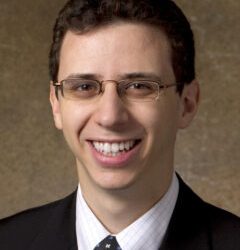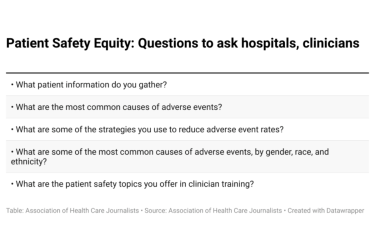
Independent Journalist Sarah DiGregorio recently offered good advice in a March 14 perspective opinion article in the Washington Post to reporters following current challenges in hospital staffing. She urged a deeper examination of the root causes for reported instability in the nursing workforce and the resulting recent cases of notably high salaries now offered for those willing to take on temporary work away from their homes.
In the article, DiGregorio shared stories from her reporting on nursing to explain why the recent spike in salaries for travel nurses reflects deeper concerns.
The pandemic has added to the stresses of nursing, leading to departures from permanent jobs and creating a situation where people willing to take on temporary employment may get $3,500 a week “and sometimes even more,” DiGregorio noted.
“Yet the problematic explosion of traveling nursing is only a symptom of a longer-running, self-inflicted disaster,” DiGregorio wrote. “Over the long-term, hospitals have failed to hire and support enough nurses to weather crises.”
DiGregorio, who is working on a book on the history of nursing, writes about how hospital executives furloughed or laid off nurses early on in the pandemic when elective procedures were suspended, and then they later had to scramble to raise staff levels.
“Ping-ponging from furloughs and layoffs to cutting hours and then to mandatory overtime is not a recipe for retention,” DiGregorio said. “The understaffing crisis is a circular problem: Not hiring enough nurses makes working conditions unbearable, leading to more nurses leaving their jobs.”
In her article, DiGregorio explains how these challenges arose long before the pandemic. She observes that the current structure of payment for U.S. medical care creates a situation where the value of nurses’ work may not be fully valued.
“From a hospital administrator’s point of view, fewer nurses taking care of more patients is much more profitable,” DiGregorio wrote. “But from a patient’s perspective, this might mean you don’t see your nurse for hours.”

Lawmakers have responded to hospitals’ concerns about rising costs charged by staffing agencies for the services of travel nurses, DiGregorio notes. Rep. Peter Welch (D-VT) and Rep. Morgan Griffith (R-VA) in January gathered signatures from more than 190 of their colleagues for a bipartisan letter to the Biden administration. In it, they asked that one or more federal agencies investigate “exorbitant price increases by nurse-staffing agencies” during the COVID-19 pandemic.
In contrast, lawmakers have not been as interested in the financial gains of hospital executives during the pandemic, even though these workers do not have as direct an impact on outcomes for patients as nurses do, DiGregorio said.
“Employing more nurses per patient is safer for patients, and it makes nurses less likely to burn out and quit. But hiring and supporting a large nursing staff is expensive, and many hospitals have been unwilling to do it,” DiGregorio said. “Travel nurses are expensive, too, but they are a short-term expense; they don’t get benefits or job security.”
‘Working too many hours with too many patients’
There’s been concern for years about how well the U.S. medical system is maintaining and attracting its nursing workforce.
The nonprofit ECRI put staffing shortages, including those of nurses, at the top of its Top 10 Patient Safety Concerns 2022 report, released last week. A high proportion of nurses are at or near traditional retirement age, with nearly 20% of registered nurses (RNs) being age 65 or older.
The American Nurses Association (ANA) has for years been asking Congress and federal officials to address what it calls “the chronic causes of cyclical nursing shortages.” In a Feb. 1 statement, the ANA said the “overhead costs associated with staffing agencies” are “only one symptom of a much larger systemic problem.”
“Nurses, like all other Americans, have the right to seek employment that meets their financial needs, allows them to work in safe conditions and to provide quality care for their patients,” ANA said.
The pandemic has only worsened problems that had been chief causes of stress for nurses for many years, ANA said.
“Nurses report that they are working too many hours with too many patients, and many are under constant stress given their responsibilities plus the fear of being assaulted at work,” ANA said. “Staffing agencies may in some circumstances provide them greater resources, flexibility, and choices about their work environments. Many nurses are choosing this option or retiring and leaving direct patient care or the profession altogether.”
‘Moral injury for nurses’
National Nurses United (NNU) has strongly urged lawmakers to pass minimum staffing ratios. This step would improve outcomes for patients and help with employee retention, easing a key source of stress that makes nurses leave the profession, Irma Westmoreland, R.N. and vice president of NNU told the House Committee on Veterans Affairs at a March 17 hearing. Westmoreland was a witness at a hearing focused on attracting and retaining medical staff within the Veterans Health Administration.
“Safe staffing is not only essential to providing the quality of care that patients need, [but] it is also critical to increasing nurse retention,” Westmoreland said in her written testimony. “Chronic understaffing can cause a decline in patient care which in turn can lead to moral injury for nurses, causing them to leave the bedside when they feel they cannot provide the level of care they were trained to give.”
Westmoreland said journalists tend to “echo cries of a `nursing shortage’ “despite data indicating the size of professionals able to do this work exceeds the need for their services in many places. In her testimony, she cited a federal report, Supply and Demand Projections of the Nursing Workforce: 2014-2030, which was released in 2017. The report says seven states are projected to have a shortage of registered nurses in 2030, with four of these states having a deficit of topping the equivalent of 10,000 full-time RNs, or full-time equivalents (FTEs): California (44,500 FTEs), Texas (15,900 FTEs), New Jersey (11,400 FTEs) and South Carolina (10,400 FTEs).
States projected to experience the largest excess supply compared to demand in 2030 include Florida (53,700 FTEs) followed by Ohio (49,100 FTEs), Virginia (22,700 FTEs) and New York (18,200 FTEs).
The NNU is among the unions that support a bill introduced by Rep. Jan Schakowsky (D-IL), the Nurse Staffing Standards for Hospital Patient Safety and Quality Care Act of 2021. The bill calls on hospitals to plan to have adequate staffing such as registered nurses providing direct care should not be assigned to the following number of patients in that unit.
Proposed limits in the bill include having a nurse assigned to:
- One patient in trauma emergency units.
- One patient in operating room units provided that a minimum of one additional person serves as a scrub assistant in such unit.
- Two patients in critical care units, including neonatal intensive care units, emergency critical care and intensive care units, labor and delivery units, coronary care units, acute respiratory care units, post-anesthesia units and burn units.
- Three patients in emergency room units, pediatrics units, telemetry units, antepartum units, and combined labor, delivery and postpartum units.
- Four patients in medical-surgical units, intermediate care nursery units, acute care psychiatric units, and other specialty care units.
- Five patients in rehabilitation units and skilled nursing units.
The bill also includes provisions intended to protect nurses who might face demand to violate the proposed minimum ratios or to take on work for which they are not prepared by education or experience.
As of Monday, Schakowsky had 77 Democratic co-sponsors for her bill. That tops the 56 co-sponsors, also all Democrats, whom Schakowsky had as supporters for her previous version of this bill, which she introduced in the 116th session of Congress (Jan. 2019-Jan.2021).
The American Hospital Association (AHA) objects to Schakowsky’s bill. A 2021 article in the publication Clinical Advisor quotes Robyn Begley, D.N.P, R.N., AHA’s chief nursing officer as saying that mandated nurse staffing ratios imply a “one-size-fits-all” approach to patient care.
“Nurse leaders and nurses are best qualified to determine appropriate staffing for the needs of their patients,” Begley told the publication. “Mandated nurse staffing ratios are a static and ineffective tool that do not ensure quality care, optimal patient experience, and staff well-being.”
AHA confirmed for AHCJ that it maintains this objection to Schakowsky’s bill. Her bill uses as a reference California’s mandate on minimum nurse-to-patient staffing ratios. The state in 2004 became the first in the nation to establish minimum nurse-to-patient staffing requirements in acute-care hospitals, according to a report from the nonprofit California Healthcare Foundation. State lawmakers in 1999 passed a bill that set the stage for the creation of specific ratios for nurse staffing in different types of hospital units; for example, the minimum ratio in medical-surgical units was one nurse per six patients.
Hospital committee model
The American Nurses Association (ANA) also has called for staffing rules but has backed a different approach.
On its Nurse Staffing Advocacy webpage, ANA notes that seven states have passed staffing laws that resulted from what it calls collaborative efforts among state hospital associations, nurse executives, and ANA-affiliated state nurses associations. These are Oregon (2002), Illinois (2007), Connecticut (2008), Ohio (2008), Washington (2008), Nevada (2009) and Texas (2009)
ANA says there is a need for state action due to a lack of clarity in federal rules, which require hospitals certified to participate in Medicare to “have adequate numbers of licensed registered nurses, licensed practical (vocational) nurses, and other personnel to provide nursing care to all patients as needed”.
“This nebulous language and the continued failure of Congress to enact a federal law, The Registered Nurse Staffing Act, has resulted in states taking action to ensure there is optimal nurse staffing appropriate to patients’ needs,” ANA says on its website.
The bill cited here, the Registered Nurse Staffing Act, seeks to have hospitals establish staffing committees to put limits on how many patients a nurse must attend. Sen. Jeff Merkley (D-OR) has introduced three versions of this measure. He had no cosponsors for the 2014 and the 2018 versions of the bill, and only one for the 2015 version, Sen. Tammy Baldwin (D-WI). Each of these Merkley bills called for having no less than 55% of the members of these committees be “registered nurses who provide direct patient care but who are neither hospital nurse managers nor part of the hospital administration staff.”
“As the husband of a nurse, I know firsthand the many challenges nurses face and how critical their care is to patients,” said Merkley in a statement about the 2014 bill. “Safe staffing that enhances patient care, reduces medical errors and bolsters nurse retention all at the same time would be a tremendous improvement to the delivery of high-quality care.
Additional resources for reporting on retention of nurses and staffing levels
American Nurses Association
- ANA Calls on Congress and the Administration to Investigate and Mitigate the Root Causes of Nurse Shortages, Feb. 1 press release
- Nurse Staffing Advocacy webpage
- Nursing Staffing Think Tank webpage
American Hospital Association
- 4 letter to Federal Trade Commission, suggesting the agency investigate what AHA calls “anticompetitive pricing by nurse-staffing agencies.”
- March 1 letter to members of Congress, Challenges Facing America’s Health Care Workforce as the U.S. Enters Third Year of COVID-19 Pandemic, includes details on reported cost of travel nurses.
More useful tools
- Congresswoman Schakowsky, Senator Brown Introduce Nurse Staffing Standards Legislation, press release from Schakowsky’s office. Link here to the bill.
- NNU’s Safe RN-to-Patient Staffing Ratios webpage
- Supply and Demand Projections of the Nursing Workforce: 2014-2030, Health Resources and Services Administration, 2017.









